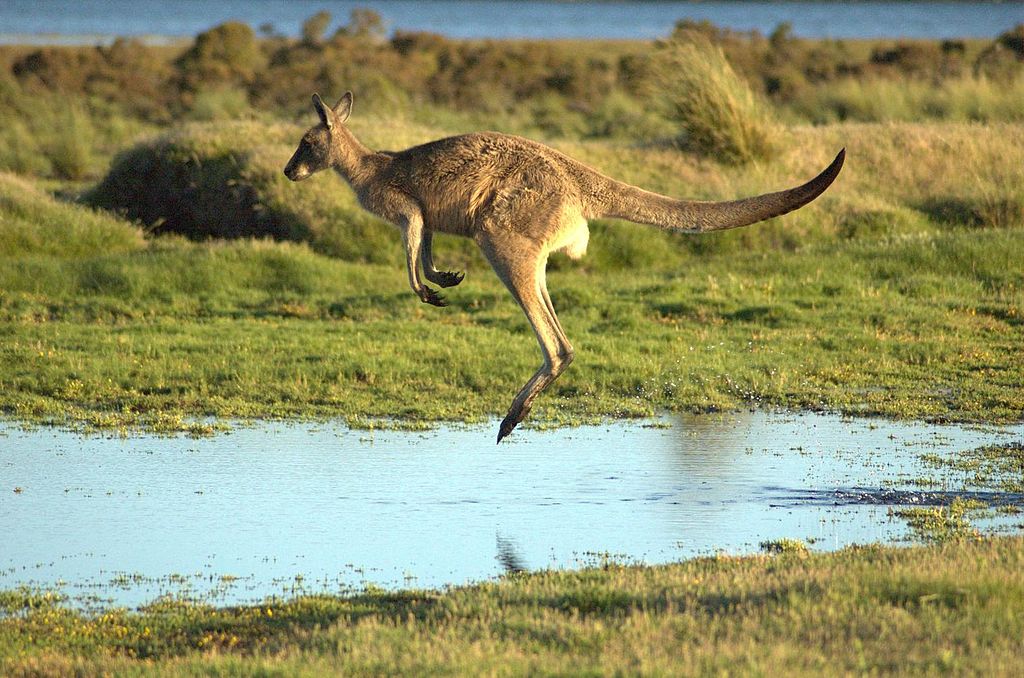- Did You Know.
- Battements dailes autour dun meurtre (French Edition).
- Reward Yourself!
Kangaroos also have great agility due to their hopping style — read more here: You are commenting using your WordPress. You are commenting using your Twitter account.
Top 10 Highest Jumpers
You are commenting using your Facebook account. Notify me of new comments via email.
- Bestselling Series.
- HIV I: Molecular Biology and Pathogenesis: Clinical Applications: 49 (Advances in Pharmacology).
- How Kangaroos Hop | Kangaroo (Macropod) Hopping | Kangaroo's Extra Leg.
- Betjeman on Faith: An anthology of his religious prose.
- Sports and Pastimes of the People of England!
- Video: Kangaroo's '10 feet' bounce secrets unlocked by British scientists - Telegraph?
- Lost River Anthology.
It is possible for a kangaroo to hop without a tail, but they probably tire more easily. The kangaroo hop, part 2: The Kangaroo Hop, part 3: Our mission is to ensure the free-living future of Australian wildlife, and to give them a voice. Wild animals have inherent value, as wild creatures, but we need to learn to value them. Good, respectful, sustainable wildlife tourism gives them a value and a voice.
What Bones Power a Kangaroo's Jumping? | Animals - tandjfoods.com
The Kangaroo Hop — Part 4: N marked it as to-read Jul 21, Igraine added it Feb 20, Emma Schonell marked it as to-read Sep 28, Karey marked it as to-read Nov 04, Dave marked it as to-read Nov 04, Olivia X marked it as to-read Feb 09, Eri Johns marked it as to-read Sep 21, Dasha marked it as to-read Mar 21, Muhammad Kamaruddin marked it as to-read Jan 16, Nicole Trogen added it May 09, Allissa marked it as to-read Mar 29, Amanda marked it as to-read Jun 14, Maya marked it as to-read Jul 12, Jelita Jaison marked it as to-read Nov 29, There are no discussion topics on this book yet.
Books by Jackie French. Some species are social, forming mobs of up to 20 individuals.
Eastern grey kangaroo adults regularly hop about 25 feet per bound and can leap higher than 6 feet. When necessary, they can travel up to 35 miles per hour; over long distances, they average about 15 miles per hour. Kangaroos use the long, strong bones in their legs and feet as a scaffolding on which their muscles and tendons attach.
Why do kangaroos hop?
The legs of kangaroos are similar to those of other mammals; the primary difference is the relative lengths of the bones. Their thighbones, or femurs, are short and thick; however, their tibia and fibula -- the paired shinbones -- are very long. Kangaroos have long and narrow bones of the toes and feet, called phalanges and metatarsals, respectively. The fourth toe is the longest and most important, as it transmits the force from the leg to the ground when moving.

Kangaroos adapted strong bones to power their jumps and developed joints that can handle landing. Every jump or hop kangaroos make imparts a great deal of force on his or her bones and joints.
Post navigation
Most other animals would suffer damaged knees if they lived life constantly hopping about as kangaroos do. Kangaroos have coped by evolving thick pads of spongy cartilage in their knees. Because of the structure of their ankle joints, kangaroos cannot rotate their ankles sideways -- this also help them to withstand the impacts from jumping.
